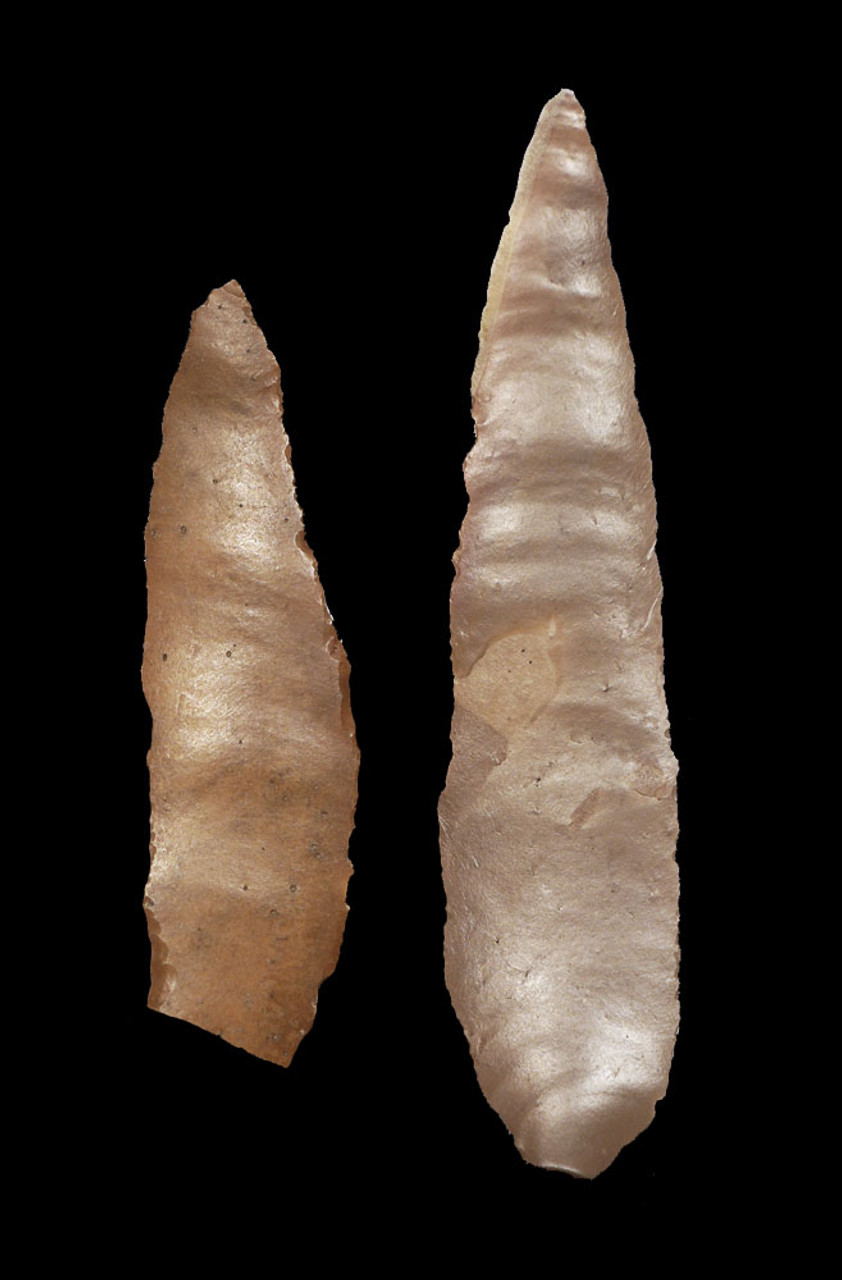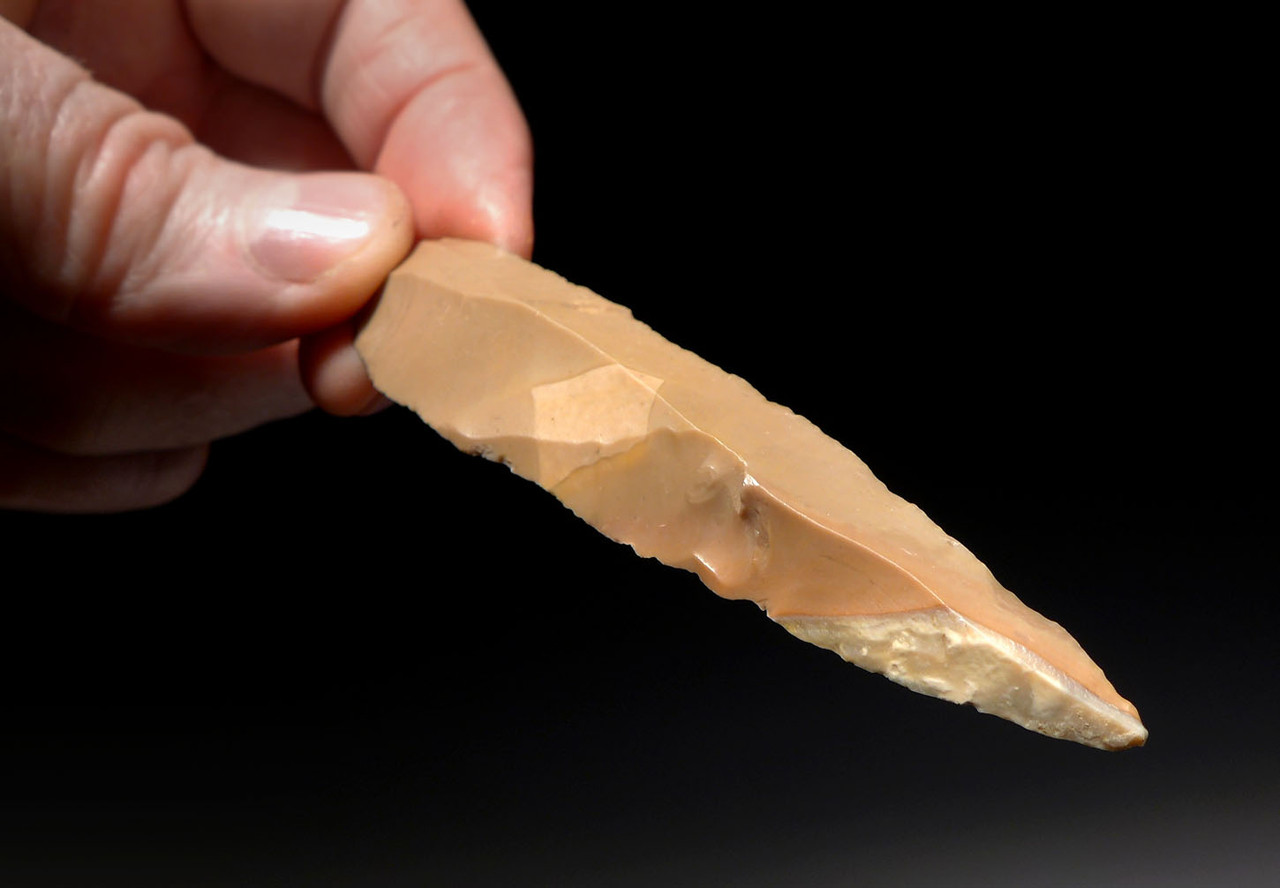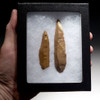Product Description
This FAYUM NEOLITHIC tool was found on an exposed site in the Desert in Northeast Egypt. It was masterfully fashioned by the earliest farming peoples of Egypt well over 5000 years ago, long before the first dynasties of Ancient Egypt were to be.
This is a set of TWO Egyptian Neolithic stone knives. One is unusually large and features a rare, original sharp point and a beautiful natural white spot in the flint near the tip without much use wear. The other blade shows extensive use wear but is also complete with original tip. Both are superb examples of their type and have no damage. They are made in colorful flint typical for Egyptian Predynastic stone tools. A necessary and important part of the Fayum tool kit needed for everyday life in Egypt over 5000 years ago!
Predynastic Egyptian Neolithic tools are a must for any advanced, well-diversified private collection. With emphasis on the splendors of ancient Egypt, very little is ever seen or exhibited from prehistoric or Neolithic Egypt.
HISTORY
Scant archaeological evidence of Predynastic Egypt exists from 9000 BC to 6000 BC. At the end of the Pleistocene Period in the Nile Region, temperate conditions made for an ideal environment for the birth of a highly specialized Neolithic society between 7000 B.C. and 3200 B.C.. Continued expansion of the desert forced the early ancestors of the Egyptians to settle around the Nile more permanently, and adopt a more sedentary lifestyle during the Neolithic. Around 6000 BC, Neolithic settlements existed throughout Egypt. Studies have determined these settlements were founded by people from the Fertile Crescent in the Near East, moving to the area during the Egyptian and North African Neolithic and bringing farming to the region.
The Neolithic Fayum farming societies of Egypt cultivated emmer wheat and flax for cloth production. They grew their crops by the lake in the Fayum depression, hence the name for their tool culture. The Fayum peoples also raised and herded goat, sheep, pig and cattle. Their living quarters left no trace in some regions but were likely made from reeds or skins over a light frame. Wattle-and-daub villages have also been attributed to these peoples. The Fayum society represents the oldest evidence of food production from the Nile dating back to 4400 B.C..
 US DOLLAR
US DOLLAR
 EURO
EURO
 AUSTRALIAN DOLLAR
AUSTRALIAN DOLLAR
 CANADIAN DOLLAR
CANADIAN DOLLAR
 POUND STERLING
POUND STERLING














